AudioCulture
The noisy library of New Zealand music
Te pātaka korihi o ngā puoro o Aotearoa
Riot 111
Riot 111 drummer Roger Allen was a public servant from Johnsonville, a suburban town north of Wellington, when he first encountered the hippie-punk scene in the early 1980s, at the inner city Terrace, just five minutes walk from Parliament.
“My brother was from the tail end of the hippie era and the start of the punk era. The colourful people, who started appearing. He introduced me into the world of The Wallsockets, a Wellington post-punk group, which featured future screenwriter and producer Fran Walsh, her cousin Martin and Brett Carstens.
“He took me to the Rock Theatre to see bands and there were all these – not punks – but forty to fifty young kids with crazy haircuts, crazy clothes, and I related to them really well. There was Sam (Swan), Sue (Forbes) and Adrienne, and they were crazy colourful young punk girls.
“Sam and Sue took me back to their place in Newtown. A squat they lived in. The front of the house had 'Hell' spray-painted in an angle across it. It had broken windows, boarded up windows. Inside the whole place was strewn with crazy op shop clothes. Spray paint all over the walls. I thought, how can these people live in here? This was their crash pad. These people seemed like total anarchists – they had no jobs and just seemed to do whatever.
“Sam and co were starting L.I.F.E [Life In The Fridge Exists] who had only one real musician – Nick Swan - who seemed to keep it together. It was mostly a theatrical experience. A fridge onstage. They didn’t play that often. They were this mythical band that hardly ever played.
“The bands who used to play a lot were The Wallsockets and Naked Spots Dance. There were bands like The Features from out of town. Wellington was transient and there were bands coming and staying there for months and then disappearing again. We all lived in this big house – my first flat – 212 The Terrace. It was a great big two storied house with about eight or ten of us living in it. Everyone had something to do with bands.
“The Gordons would turn up and they’d run out of money and couldn’t get back to Christchurch on the ferry and they’d camp out at our place until they’d made enough money with their dole to get back.
“People would freak out at punks – people like Gary Stone who’s dead now – a bit of a skinhead legend. I remember seeing him turn up as a mod. The next few weekends he turned up as this green monster with safety pins at parties and started slashing his arms up with bottles and freaking people out.
“There were people like that with this slightly violent edge, then there were the really creative people like Fran Walsh, who were these cool crazy witchy girls. This bunch of girls – Fran, April and Zann – were like this little gang and they were friends of my brothers’ – I flatted at 212 with two of them.
“We were listening to Wire. PiL. Magazine. Eno. Bowie. Anything slightly bent and drug orientated. Later it was The Fall. The Ruts. I liked aspects of the Sex Pistols, but I found that almost a bit normal; too clichéd rock and roll. We were more intelligentsia. In Wellington we liked to believe we were more politically connected. This slight attitude that Auckland was full of hairdressers and Wellington was these real beat on-the-edge types.
“It didn’t take me long to decide I didn’t want to work for the government in an office any more, especially when I started to go to work with dyed hair. I was a cartographer for the DSIR (maps). I decided to leave my job and go on the dole.
“The Terrace documentary (filmed by Chris Knox in late 1980 and screened in January 1981) house was David Blackmore’s. He’s now a successful businessman in Wellington. He owned a house at 246 The Terrace. Dan and Nino Birch (Beat Rhythm Fashion) used to live there, and this other guy, Wayne, who was into PiL (he had a PiL tattoo on his arm). A safety pin punk. The Terrace was a cool place. You’d spend the day cruising, visiting your mates and playing music.”
That’s how he first met Geoff, a punk fan from New Plymouth, renamed Void on an acid-riddled evening in Wellington. Void had gravitated to the capital in 1980 to join hometown friend Brett Carstens after time at school in Auckland.
“I’d started sneaking off to Zwines with a couple of friends,” Void remembered in 2005. “We’d go in our school uniforms sometimes and we’d be thrown around the room by the mad pogoing psychopaths. Zwines was a paradise of chaos where no rules existed.
“In late 1979, I left school. I had a cousin who was in The Primmers (Miriam Ludbrook). Every gig we went to was exciting and you experimented with weirder and weirder clothes, which got you attacked every day.
“At every party bands played. I was close friends with the guys, who’d become The Newmatics, hung around with them, and went out every night to Liberty Stage, the Gluepot and Zwines.
“I’d grown up in New Plymouth so I had really close ties with a group of friends who’d ended up in Wellington, forming groups. At the end of 1980 - with dyed hair and an army coat - I felt lost, flunking in everything I did, so I drifted slowly south, hitchhiking and bumming around until I landed in Wellington and met up with Brett Carstens from The Wallsockets.
“I moved into 246 The Terrace, which was half bohemian university types, and half band members.
“All the bands that played that summer – Shoes This High, LIFE, Wallsockets, The Spies, Unknown Wrecks – had burnt themselves out. Over the winter there was no music suddenly, and then came the insult of the Springbok tour. Pig Muldoon was Prime Minister and there was state control of enterprise. His era was coming to an end. He had to hold on to power by using the Springbok rugby tour – rugby the ethos, heart and soul of the New Zealand psyche – to win an election.
“Roger and I decided to release a record for the movement. The war haka was the cry of New Zealanders when they go into war, and it’s also the cry of Te Rauparaha and has such symbolic meaning to being a New Zealander. I found its English words and started doing a haka with Roger following the beat. Mark Crawford (bass) was a friend of ours, and Nick Swan (guitar) was a friend of Roger’s who’d been in bands.”
“I wanted to sing it on the back of a truck while we were marching because during the Springbok tour it was your full time job. You were marching every Wednesday and Saturday and it dragged it out of you. We were only kids. I was arrested twice and beaten up by cops as a member of the Brown Squad which fought the Police Red Squads in Wellington, with other members of the band, and in Auckland.”
“We started to get asked to play at gigs (their first live show at the end of tour party at Victoria University on 25 September 1981) and we had one fuckin’ song (laughs). So we thought we better write some songs and practise and learn these things.”
When ‘1981’ was re-pressed in October it entered the pop charts for two weeks peaking at No.46 due to good sales in Auckland.
Riot 111’s set was swelled by new songs ‘Move To Riot’, ‘PR24’ and ‘(Hey Hey) DMA’. When ‘1981’ was re-pressed in October it entered the pop charts for two weeks peaking at No.46 due to good sales in Auckland. A shock. Void detested the chart mentality. But star status of a kind was coming his way whether he liked it or not. He made the New Zealand Truth in late 1981 when his kilt was ripped off on stage at an early Riot 111 show at the Rock Theatre.
In January 1982, Riot 111’s ‘1981’ (both sides) appeared on the Ripper Records compilation Goats Milk Soap. The same month their second single ‘Subversive Radicals’, backed with ‘Writing On The Wall’ and ‘Escape or Die’ appeared, and made number 19 in the New Zealand pop charts.
Roger Allen: “I didn’t like ‘Subversive Radicals’. We went into the studio (Marmalade) in early December 1981 and thought we could get away with it like 1981 with fuck-all practice. I quite liked ‘Writing On The Wall’.”
On 19 August 1982 Riot 111 supported The Fall at Victoria University on the Hex Enduction Hour tour. It was the influential Manchester group’s third New Zealand show.
Roger Allen: “That was like ‘wow we’re playing with The Fall we’re bigtime’. A great gig. It was unreal. When we started cranking up those songs people would really go off their heads. The really powerful driving drums would get people up and cranking.
“Void had such a stage presence when we played, he pulled on his black leather pants, black leather studded boot stirrups, and a little funny kid’s riot helmet. He had a PR24 [police long baton] which he reckoned he’d grabbed off a cop and kicked him in the nuts.”
Void: “We jumped on stage at this Victoria University gig, which was an anti-American nuclear ship gig. The crowd started to get really restless and hyped up as the drum started to beat – boom, boom, boom, boom – and the guitars would go, and I came out in my police uniform and helmet and started yelling ‘Move Move Move Move Move Move!!!’ and people just erupted.
“The Taita boys started biffing chairs and the Wainui’s started hoeing into the football club and the football club started smashing the netball club and the whole place exploded into the biggest fuckin’ brawl and riot and I was standing there as these full bottles came and I’d just catch them – when you’re onstage you can’t see past the lights – or duck – full bottles were exploding on the drum kit and just missing my head. ‘Move Move Move!!!’ Chairs were being smashed over everyone. We only got to play one song that night.”
Christchurch got to see Riot 111 up close when they played three nights with First Fifteen at The Gladstone late August and early September 1982.
“Within twenty four hours of Riot 111 and First Fifteen landing in the holy city of Christchurch, we were locked up."
– Void
Void: “Within twenty four hours of Riot 111 and First Fifteen landing in the holy city of Christchurch, we were locked up. Two members of each band were locked up. Nick did the interviews, and did a very anti-boot boy and skinhead rant (he called them a new type of hoon) and all the skins turned up to smash the place.
“We got out on the Saturday to play and had to placate the crowd. I knew a lot of the guys. It was a pretty highly charged gig and everyone had a great time. There was another riot outside the pub. The Gladstone then closed for six months to touring bands.
“I started organising Wellington gigs because no-one was going to let us play. We’d have weeks where they’d be 100 to 150 punks and skins and crusties and schoolkids hanging around all summer getting out of it in parks. No one would let us in pubs. We were all wanting to play and make noise.”
Void with (the late) Gerald Dwyer (Flesh D-Vice singer) organised the Underground Emerges, the first punk festival in Wellington, staged in late January at the Maatauranga Hall in Aro Valley with Riot 111, First Fifteen, Aftershock, Vietnam, Ladies Toilet, Flesh D-Vice, Final Solution (New Plymouth) and Suspect Device.
Roger Allen: “It was this little school hall that the local hippie cooperative had stored all their food, and all these cops came in – quite often the Riot Squad would come in during the gig – and there was this cat with all this gold braid and he had a ceremonial sword – a big cop visiting from Britain who was leading the riot squad around Wellington. We’d just started playing ‘Move To Riot’. We kept playing and they fucked off.”
Golden Showers followed at the Newtown Community Centre in Wellington on 2 April 1983 after a smaller successful punk show there. The line-up was the best of New Zealand’s punk groups – Riot 111, The Johnnys, Desperate Measures, Unrestful Movements, Flesh D-Vice, Aftershock, Suspect Device, Desolation and Aryan Army.
Void: “Golden Showers, I put on in direct competition to the large hippie folk festivals going on – Brown Trout and Sweetwaters – an early 1970s hangover. What a concert. It was insane. We had boot boy gangs from Christchurch, Dunedin, Auckland, Palmerston North and New Plymouth. Wainui’s, City’s and Boots. Darryl and others from Auckland, Palmerston North and New Plymouth. All came to this gig. Free ranging punks.
“People were slam dancing and throwing up and pogoing. There was this guy as a Residents eyeball rolling around. People were having sex on the stage. Girls were passing out. No violence apart from when the cops came and someone took to them. It was the best best best gig.
“I was taping (the live Capital Kaos LP) with two mics on either side of the speaker so you got a through the desk sound and a live stereo sound. On a 4-track.”
When the line up for Force Six, the last of the big punk shows was announced for the Rock Theatre on 22 October 1983, Riot 111’s name was missing.
Roger Allen: “I less and less wanted to do it. More and more skinheads would come along. Every gig we’d play the toilets would get smashed, and you’d never be able to play there again. People would get beaten up and there were friends of mine who were punks who were into it, but they’d come less and less to the gigs because of the violent element. And I started disliking that fact. Mark and Nick felt the same.
“We turned up at a gig and I remember being there in the entrance to the venue and me and Nick and Mark going ‘fuck this’. That was the death of Riot 111.”
Void: “When Roger went that was it. About three days later this guy invited me to do a play. I went and did a Brecht play, liked it. The theatre groups had a summer season. I said I want to be an actor and they took me on and I played Mac the Knife in a 1950s version set with bodgies and widgies.
“I got to know this other world. I went to see my brother in Sydney. I’d always been scared of Sydney before because of all the drug fucked people I’d seen go and come back ruined from opiates. I auditioned for drama school there and got in.”
--
The full story of the Avalon incident is here.
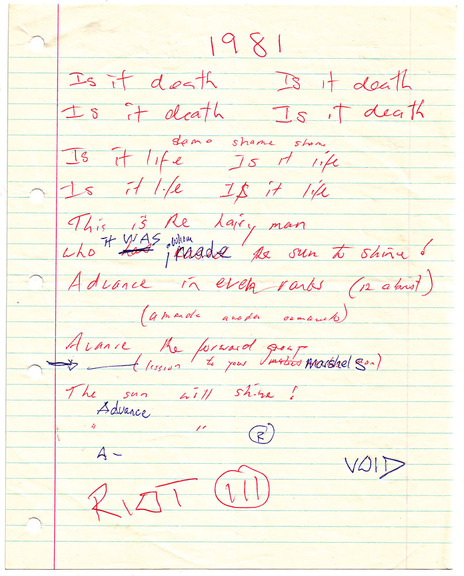
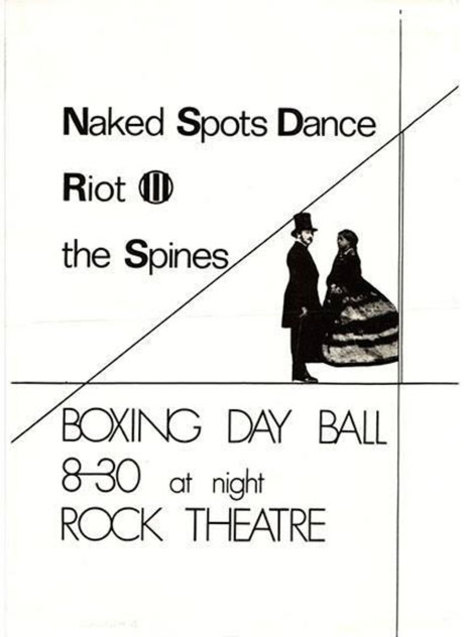
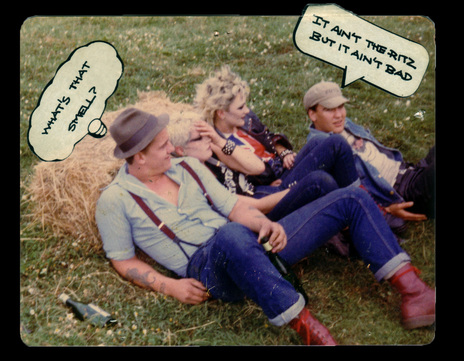
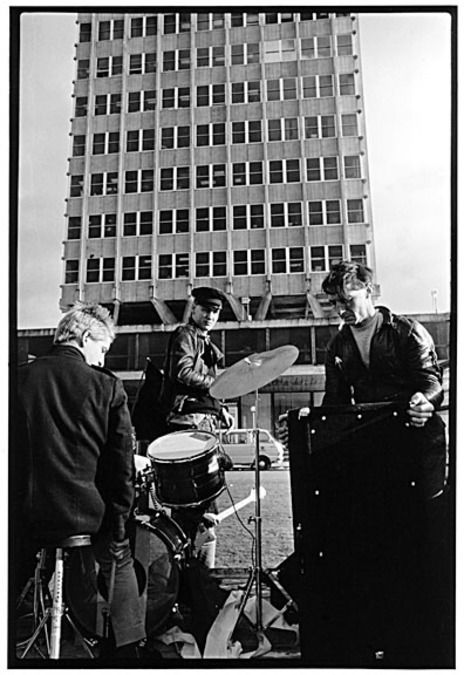
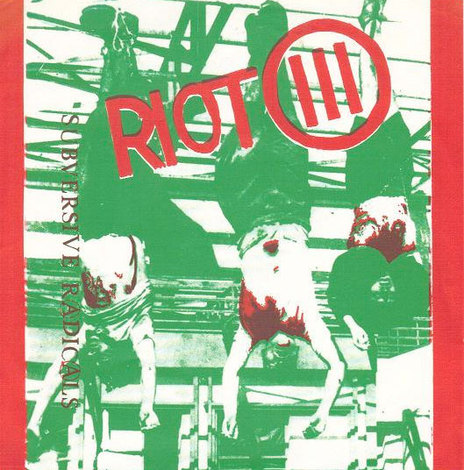
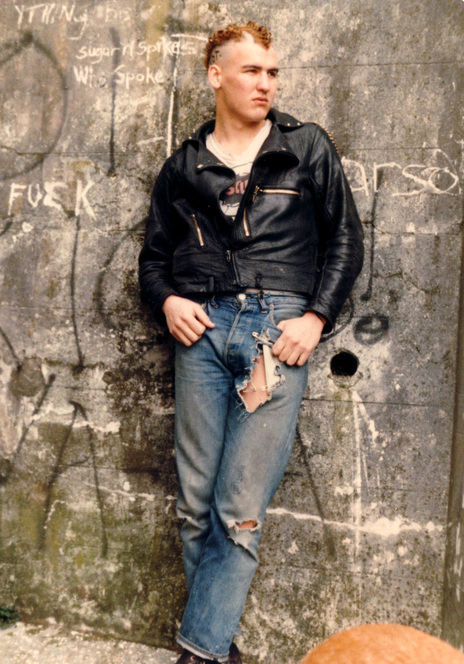
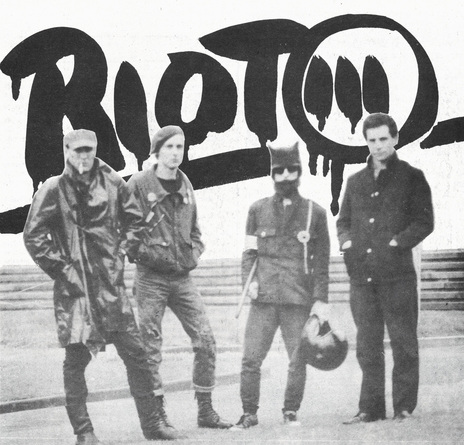
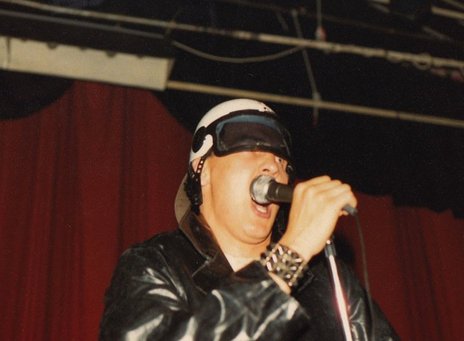
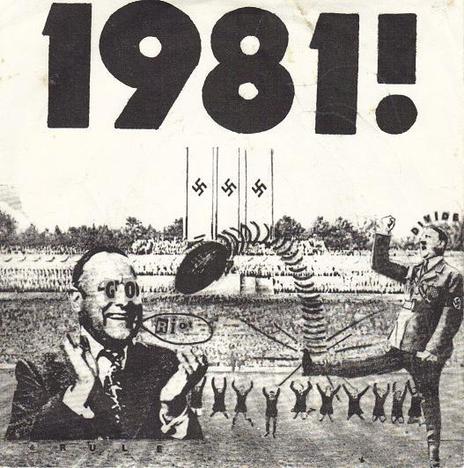
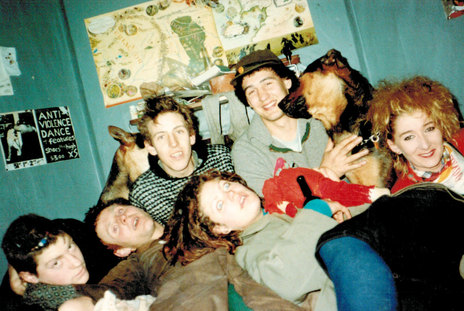
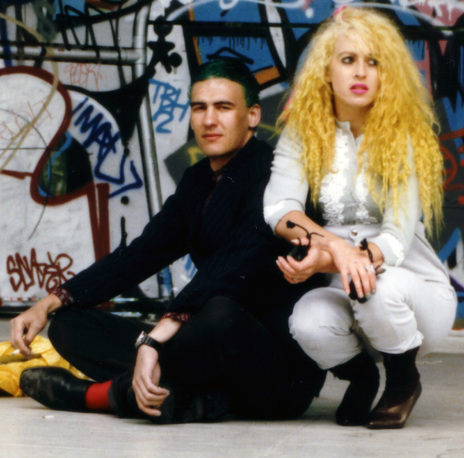
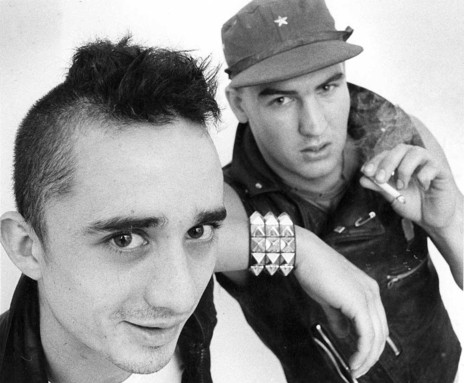
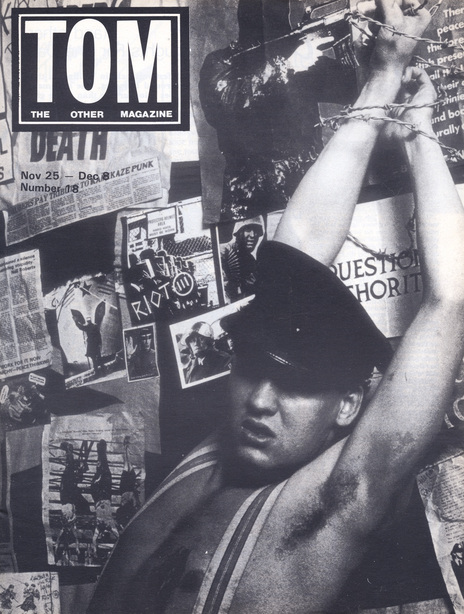
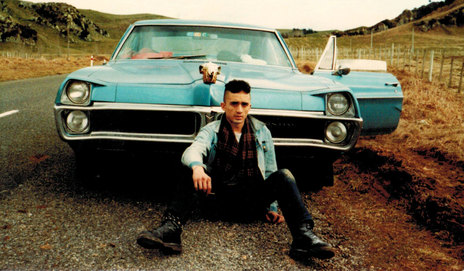
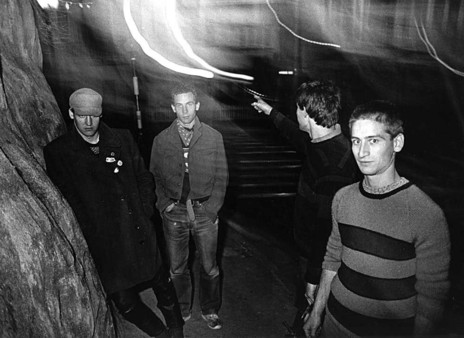
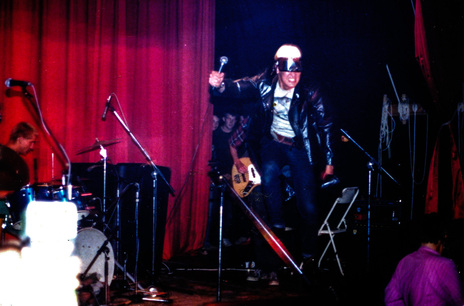
Roger Allen - Drums
Mark Crawford - bass
Nick Swan - guitar
Void - vocals
Visit our sister site
NZ On ScreenMade with funding from
NZ On Air